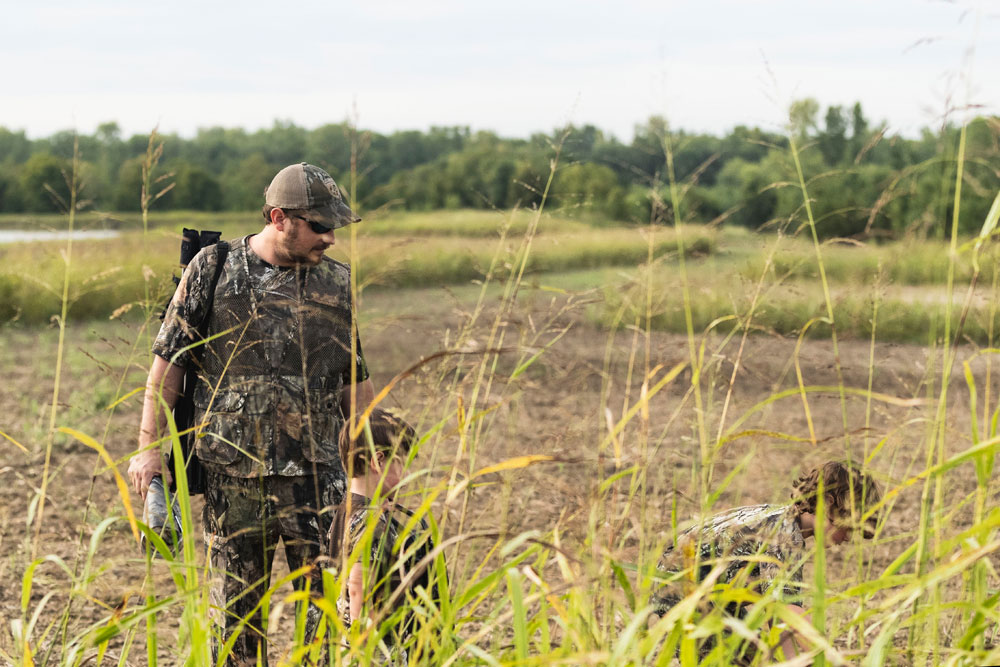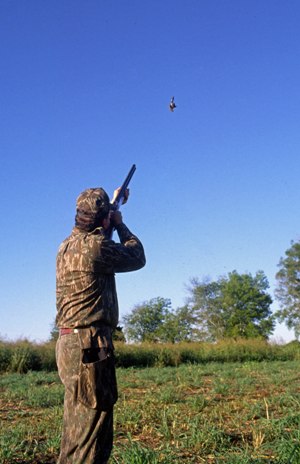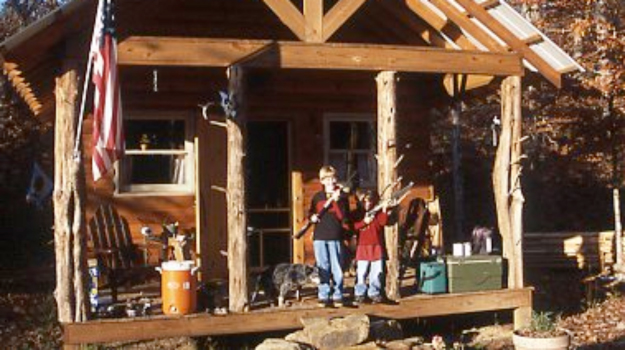
Marty Fischer
Use Proper Foot Placement for Accurate Shooting
Footwork is an important key to shooting accurately. Often a hunter will be sitting on a dove stool and has to move his body to compensate for the angle that the dove is coming toward him. He will run out of swing and pull his head up off the gun, and the gun will stop. Instead you want to have as much room as possible to swing your gun left or right, depending on the flight of the dove, to lead the bird properly as you swing the gun in front of the bird. If you are sitting on a stool, you need to read the direction the dove is traveling as it flies. As long as you stay still and don’t move, most of the time the dove will continue flying on the same path and go in the same direction. If you wait until the bird is in range before you move, he shouldn’t change his flight path. As you are watching the bird, you want to anticipate when and where you will take the shot. So, you’ll change your foot position whether you are sitting or standing.
 I am left-handed, so my right foot goes forward to the direction where I want to take the shot. If you are right-handed, your left foot should move in the direction where you plan to take the shot. Then, you have much-more room to continue to swing the gun once the bird comes within range. A right-handed hunter can turn much farther to the left than he can to the right, and a left-handed hunter can turn more to the right than he can to the left. You want to set your body up before you take the shot to give your body the most range of movement before the shot. We teach this principle to clay-target shooters, and this same principle works for dove hunters. If you run out of swing, the gun slows down, and the cheek comes off the stock. Then you have a guaranteed recipe for a miss.
I am left-handed, so my right foot goes forward to the direction where I want to take the shot. If you are right-handed, your left foot should move in the direction where you plan to take the shot. Then, you have much-more room to continue to swing the gun once the bird comes within range. A right-handed hunter can turn much farther to the left than he can to the right, and a left-handed hunter can turn more to the right than he can to the left. You want to set your body up before you take the shot to give your body the most range of movement before the shot. We teach this principle to clay-target shooters, and this same principle works for dove hunters. If you run out of swing, the gun slows down, and the cheek comes off the stock. Then you have a guaranteed recipe for a miss.
Buy the Best Ammo
A mourning dove is not a very-big bird, nor is it a very-hard bird to bring to the ground. I never will understand why some hunters choose high brass No. 9 shot to go dove hunting. When I go dove hunting, I shoot clay target loads. The pellets in a clay target loads have more antimony (a red hardening agent) in them. Therefore, the pellets in the clay target loads are a little harder than the pellets in the inexpensive shells that most hunters buy. The cheapest part of a dove hunt is the ammunition you shoot. I want a shell I know is going to pattern very consistently to use in the gun that I choose to take to the dove hunt. I like a 3 gram 1 ounce or 1-1/8-ounce shell in a 12 gauge. I usually shoot either No. 8 shot or No. 7-1/2-shot. This type of shell is usually considered a heavy target load. The inexpensive shells are okay as long as you’re shooting doves that are only about 30-yards from your stand site. But if you try to stretch your shot out past 30 yards, the harder shot and the better pattern of the target load will help you make those longer shots. The difference in price is only about $1 per box more for the target loads than for the discounted shells.
Additional Tips:



























